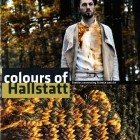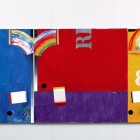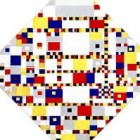-

The results of the Research Agenda 2008-2012 through a selection of expertises of the Cultural Heritage Agency of the Netherlands.
-
Expertise
 Reading modeshare
Reading modeshareResearch into fabrication yields insights into the art process of the artist or craftsman in the context of their era. It also provides indications of the original appearance of objects and changes that have occurred or are likely to occur.

Adriaen van Ostade, Paintersworkshop, 1685. Photo: Rijksmuseum Amsterdam
Studio practice
The work practice of an artist reveals itself when hidden traces can be 'deciphered'. By examining the making process of an artwork we can better understand how an artist or craftsman proceeded in their work. This supplements art history and is hence also called 'technical art history'. Examples include research into the studio practice of Van Gogh and Rembrandt's Pupils, but also the fabrication of textiles, furniture, glass, ceramics, metal objects, or the painting of historic interiors. Research into the 'studio practice' of contemporary artists is important, because the particular utilisation of materials is strongly linked to the individuality of the artist.
Conservation Research
Research into fabrication is the point of departure for a better understanding of the 'life path' of an object. In order to explain its present state, it is necessary to know how the work was created, how it original appeared and whether any changes have occurred over time. Furthermore change processes in the past may also help in formulating prognoses for future material behaviour. An understanding of the making process also helps in determining optimal storage conditions for the object.
The method followed here is composed of three steps:
Examination of the object
Analytical techniques can make invisible aspects of artworks visible, such as signatures, the layer structure or hidden structural elements. Research into the chemical composition helps to identify materials and provide insight into the fabrication process. The RCE has at its disposal both a high-grade research facility with a broad spectrum of analytical techniques and reference collections of analytical data to be deployed alongside.
Examination of historical sources
The most reliable information for the use of materials by the artist is obtained from the remnants of their materials or tools, but these primary sources are often no longer present. As a substitution, contributions of materials from contemporaries or sample books from manufacturers can be studied. The RCE also has many unique reference collections in this area, such as historical paints, binders, inks, drawing materials, plastics and stone samples, but also sample books and one of the largest collections of early synthetic dyes and pigments.
Written sources are also indispensable for research into fabrication. In the field of fabrication processes the RCE has written sources from almost every object type, from ancient times up until now, on fabrication, descriptions of processes, countless historical recipes, and databases of literature references. Including these historical sources in the research also provides insight into the relationship between the biography of the material and the significance of the object.
Making reconstructions
Reconstructions are necessary for testing the reliability of historical information. The written sources can be tested in practice by replicating the processes. Reconstructions also serve to verify the results of analytical techniques carried out on material objects. The RCE has an extensive collection of reconstructions. These have been used for research in the past but can just as well be used in the future anew to contribute to research on objects and their fabrication.















